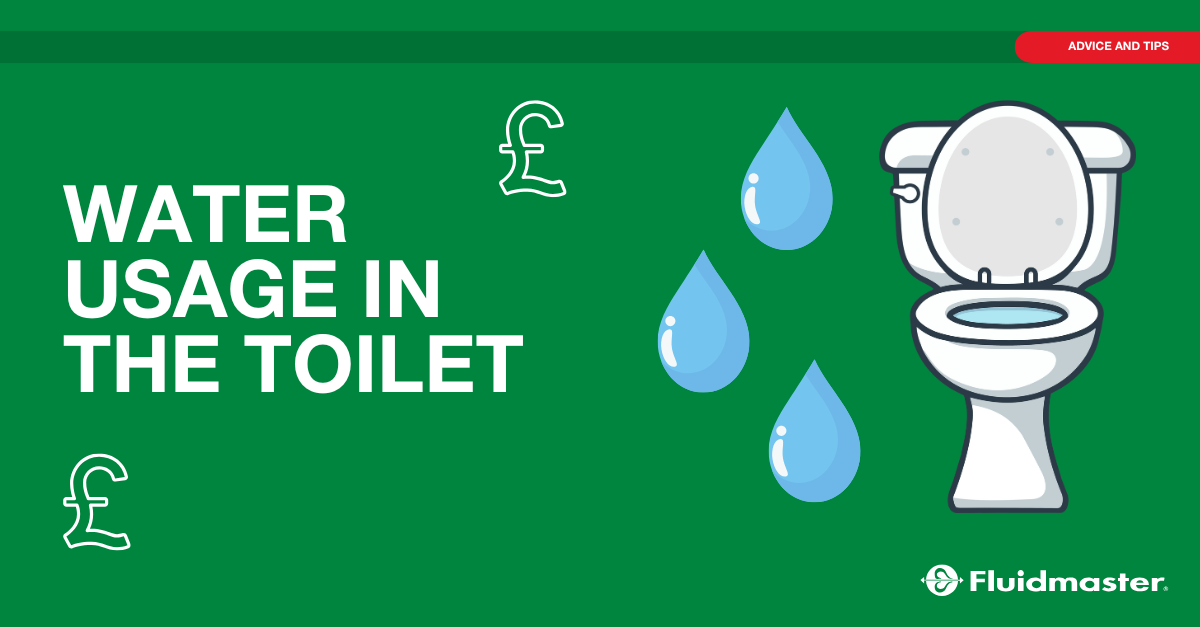
How Much Water Does Your Toilet Really Use?
When we think about saving water in the home,...

Modern, economical dual flush toilet valves can save many thousands of litres of water per year, providing that the dual flush mechanism is being used effectively. If you are not sure how to activate the correct flush option on your toilet cistern at home or when you’re using a public washroom, read on.
A lot of water is wasted in the UK through the incorrect use of the dual flush button or lever. To ensure you are using the dual flush correctly and not defaulting to a full flush when you may not need to, we have some handy, helpful tips about how to use our range of dual flush options.

A standard flush plate like this Fluidmaster one will often have a large and a small button positioned separately. This kind of flushing mechanism is simple to use. The larger button triggers a full flush for solid waste which will generally use approximately 6 litres depending on the valve that is installed in the cistern. The smaller button triggers the short or partial flush for liquid waste, and will generally use approximately 3 litres.

The connections on the back of this style of flush button will determine whether a short flush (approx 3 litres depending on your flush valve) or full (approx 6 litres) flush is triggered.
In this instance pushing on the smaller section will start the short flush for liquid waste. Pressing down on the larger section of the button will start the full flush for solid waste.
Depending on the brand of flush button installed, sometimes, both sections of the button may automatically depress when the smaller or larger part is pushed. As long as you are pressing the correct part of the button required, the flush should still use the selected amount of water. EG When the short flush is selected on this model, both sections of the button will depress. The pneumatic connections on the back of the button are acting independently, and will activate the selected short flush if that part of the button is pressed. When the full flush is required, just the large section of the button will depress.

This type of flush button is typical of those often found on the lid of a ceramic cistern and is compatible with a common dual flush ‘drop valve’.
The sections of the flush work independently to trigger the full or short flush, depending on which part of the button is depressed.
In the case of this specific button, when the smaller part of the button is pressed it will initiate the short flush amount (approx 3 litres). Pressing the smaller part may appear to push both sections down, but the connections on the back of the button will determine how the valve is activated and therefore the amount of water which is used. To use the full flush press the larger section. And for the short flush, press the smaller section.

Some lever action cisterns can operate using dual flush. In the case of this specific Fluidmaster lever, the operation is simple. Pushing down selects a full flush (approx 6 litres) for solid waste. Or pushing the lever up selects the short flush (approx 3 litres) for liquid waste.

Not all cistern levers are connected to a valve with dual flush capability. For those which are, It’s important to understand how to trigger the short flush. For the majority of flush levers which activate dual flush syphons, the options are press and release for a full flush or press and hold for a short flush.
In some instances, swapping to a dual flush system can save up to 70% of water used per flush. Of course, a dual flush is most effective at saving water when used properly. Our advice for maximising the effects of dual flush valves is to:
Take a look at the full range of Fluidmaster flush activation options to find out more.